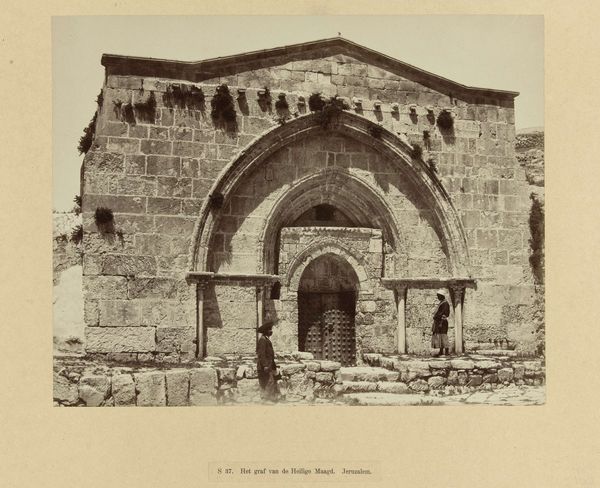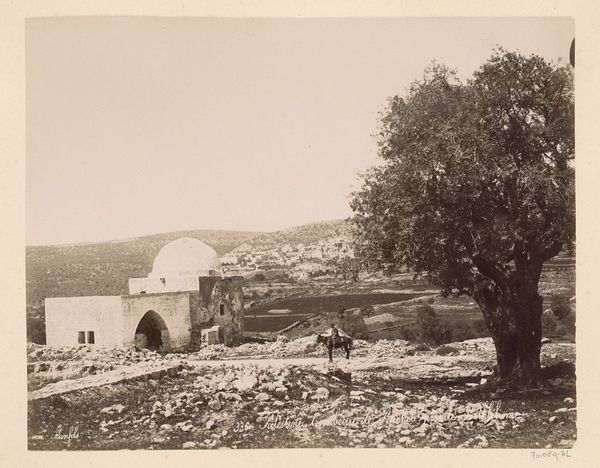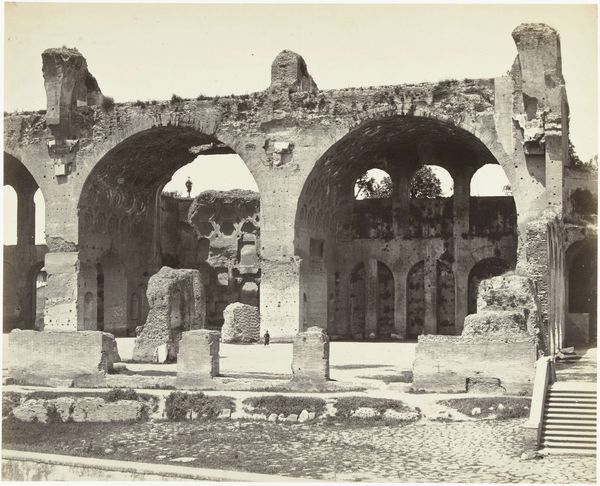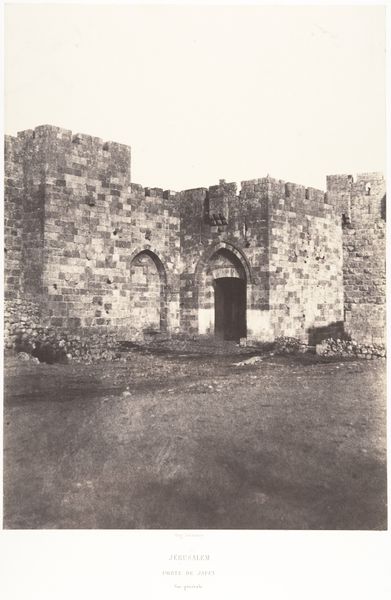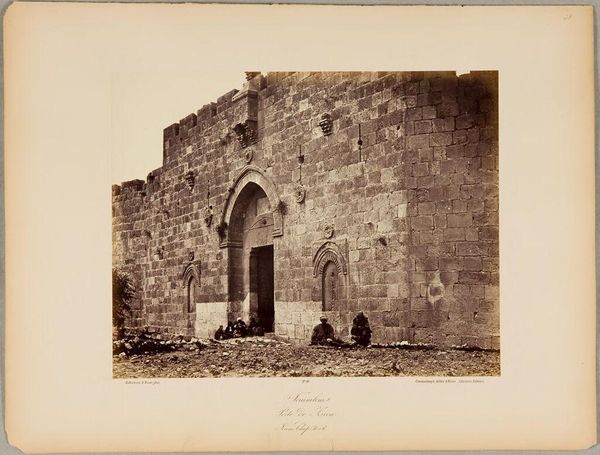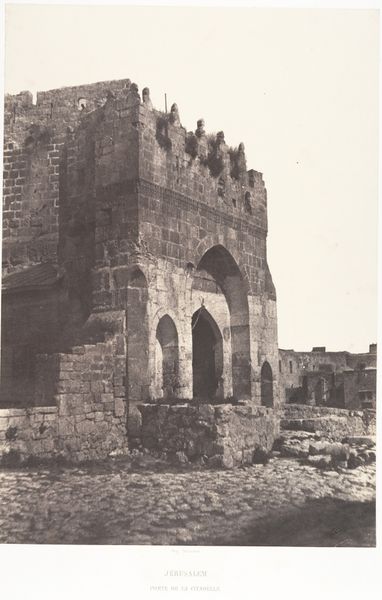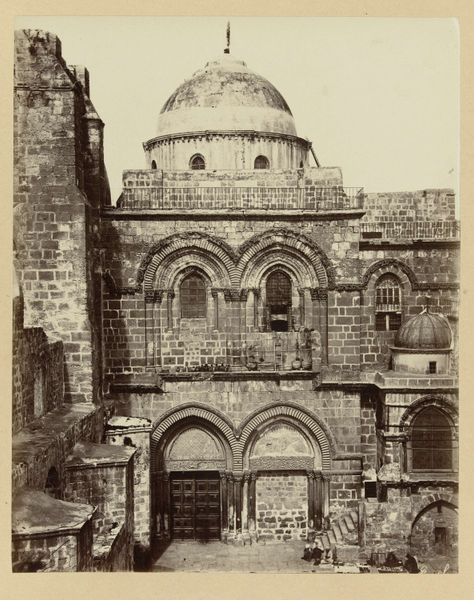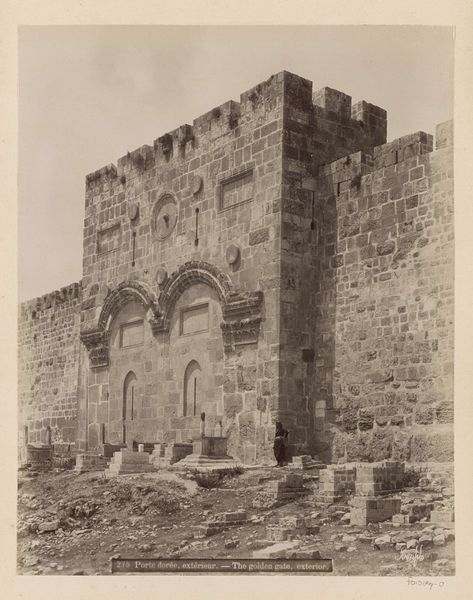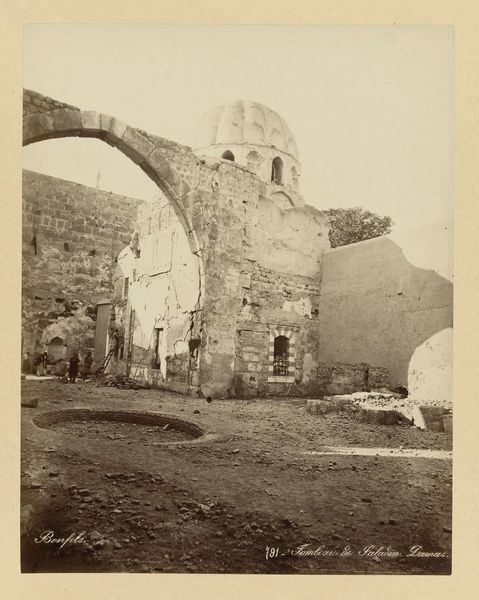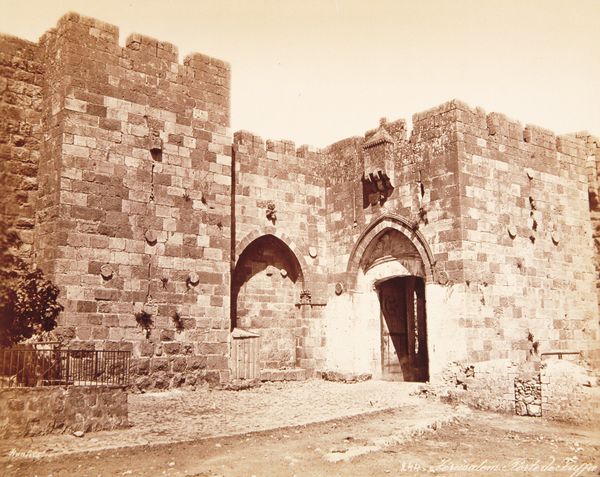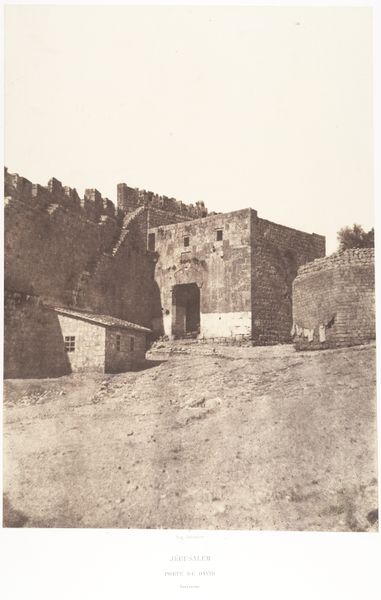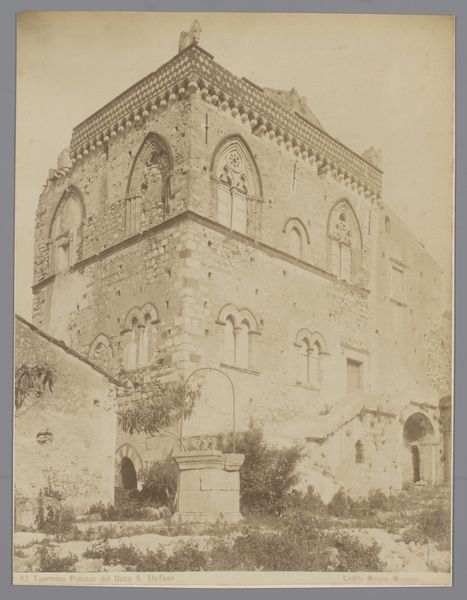
Graf van de Maagd Maria en de Grot van de Doodsangst in Jeruzalem c. 1867 - 1895
0:00
0:00
maisonbonfils
Rijksmuseum
print, photography, architecture
# print
#
landscape
#
historic architecture
#
photography
#
historical photography
#
19th century
#
islamic-art
#
architecture
Dimensions: height 225 mm, width 284 mm
Copyright: Rijks Museum: Open Domain
Editor: Here we have "Grave of the Virgin Mary and the Grotto of Agony in Jerusalem," a photograph from sometime between 1867 and 1895, by Maison Bonfils. It feels so austere. The stone architecture is monumental but stark. What do you see in this piece from a formalist perspective? Curator: I see a fascinating study in architectural form and light. Observe the geometric clarity: the severe rectangles of the main structure contrasting with the rounded archway, which repeats on a smaller scale inside the entry. Note how Bonfils uses light and shadow to articulate the textures of the stone. Where does your eye lead? Editor: My eye is drawn to the entrance, specifically that darker, smaller archway within the larger one. It creates a sense of depth and mystery, beckoning the viewer inward. Curator: Precisely. The play of light and shadow also structures our perception of depth. Notice how Bonfils positions the figures? How do they affect the geometry of the scene? Editor: The figures, though small, punctuate the composition, don't they? Their vertical lines break up the horizontality of the architecture, adding a human element. The tonal range, especially the darker robes, seem to reiterate the darker, receding arch. Curator: Indeed. Bonfils has a keen sense of visual weight and balance. I'm also curious about the surface of the print. What can it tell us? Editor: The slightly faded, sepia tone gives it a feeling of antiquity, doesn’t it? Makes the scene look even more historical and…distant. Curator: Precisely. These are the intrinsic elements that make this work compelling regardless of subject matter. A fascinating confluence of light, form, and material. Editor: It’s interesting to see how focusing on form reveals so much. Thanks for your insights.
Comments
No comments
Be the first to comment and join the conversation on the ultimate creative platform.
